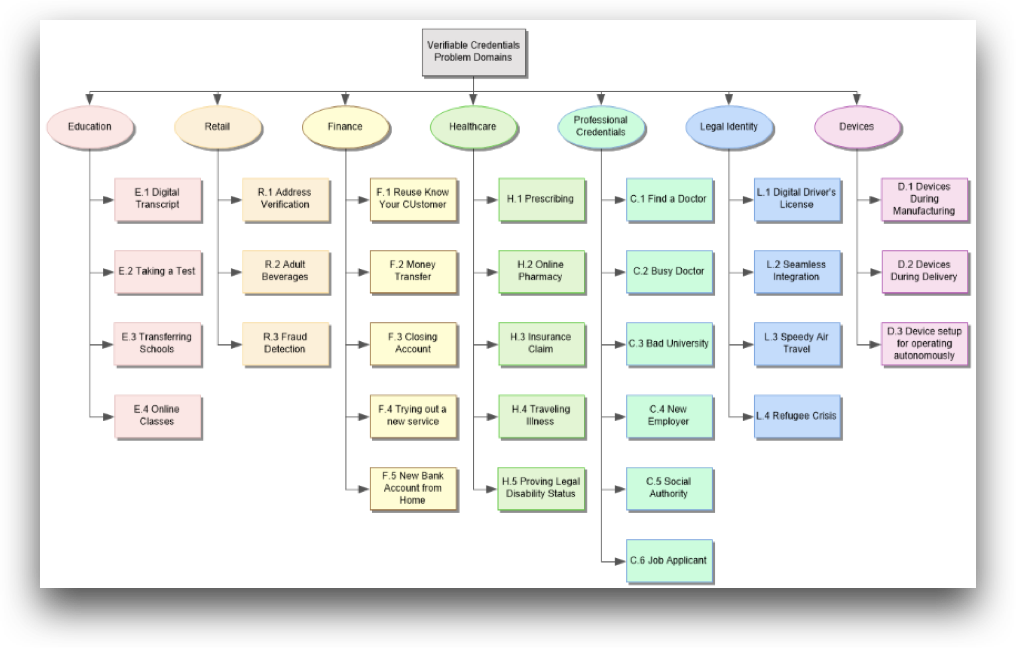Verifiable Credentials Use Cases
Multi Domain Use Case Map
Use cases for verifiable credentials can span several key domains:
- Education
- Retail
- Finance
- Healthcare
- Professional Credentials
- Legal Identity
- Devices
An infographic from the specification is presented below.

Finance
Reuse KYC and Anti-Money Laundering
Consider the following scenario: a woman wishes to open an account at a bank, and as part of that process, the bank asks her to provide two sources of ID to confirm her identity, aka the "Know Your Customer" check. She selects government-supplied verifiable credentials to ensure she receives mail at a specific address where she has a national ID card. These government-issued documents help the bank confirm her identity, and an account is opened for her. The bank issues the woman a digitally-signed credential for her account.
This credential verifies that the user:
- Has an account at the bank and sufficient permission to access the account.
- Has completed a KYC check.
Furthermore, the issued credential may also be used as sufficient verification by other financial institutions. The credential assures other banks that the user is verified, alleviating concerns about misdirected transactions and money laundering.
Money Transfer
A user with a bank account with one financial institution wants to send funds to his family in another country via a money transfer service. He has verifiable credentials in his credential repository that can be used to share his identity profile. He also has the credential from his family verifying the destination bank account. By sharing these verified credentials with the money transfer service, they can verify both the source and the destination of funds. This adds confidence to the delivery of the funds and meets the regulatory requirements to prevent money laundering.
Education
An example of the .edu domain is presented for additional context and reinforcement of the concepts already presented in this section. In this scenario, the VC issuer is an educational institution that issues a VC representing the completion of degree requirements to graduating students. The educational institution decides what information should be packaged in this particular credential, and attributes will have values expressed.
Student requesting a Digital Transcript
A university issuing an "extended transcript" that includes course grades could, upon the request of students, issue a digital credential representing the degree awarded to the student.
Here are some examples that might be in such a credential:
- First Name
- Last Name
- Degree Type
- Date Of Issue
Student Transfering Claims from School to Bank
Students in schools that offer a credential repository service to all students and alumni could use another entity such as a Bank offering a similar service to move his claims to the service provided by his bank without needing to have them reissued by the school.